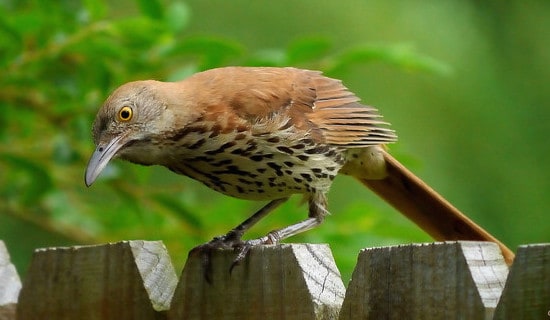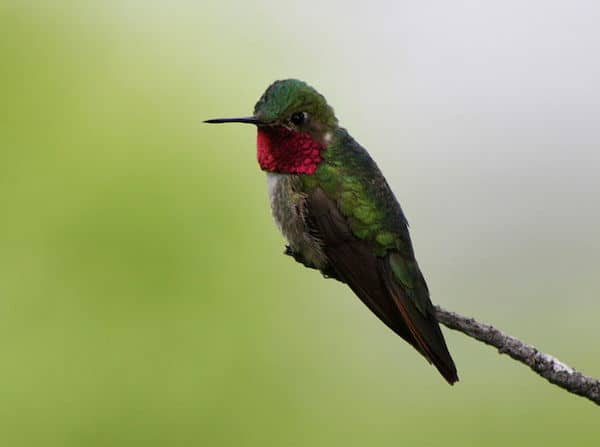Like Europe’s redstarts, the American redstart flashes not red but orange in its tail, as well as on its wings and the sides of its breast. Otherwise, this warbler is black with a white belly. Birders call females and immatures “yellowstarts” because of similarly distinctive flashes of yellow (or in first-spring males yellow-orange) on the tail, wings, and the sides of the breast.
Listen for
If you make spishing or pishing noises around a mixed flock of migrating warblers, one of the first birds to pop up for a closer look may be this flashy little bird. Even seasoned birders can be thrown by the redstart’s high-pitched, variable song, although some versions are easily recognized, such as sweet-sweet-sweet-sweet-WHERE. Often they sing one song and then the other. Call note is a clear, sweet tchip!
Find it
The American redstart is a wood warbler that was named after a European member of the thrush family. But the American redstart is a true American original, even if its name derives from elsewhere. Within its extensive breeding range across eastern and northern North America, American redstarts nest in a variety of wooded habitats (deciduous or mixed) with an understory of young trees.
In mountainous areas, they are common nesters in re-growing forests or at the forest edge. In much of the lowland South, they nest in lush forests bordering river courses and are uncommon. During migration, American redstarts are among the most visible migrating warblers.
They primarily winter from Mexico south to northern South America and in the Caribbean, although small numbers winter in Florida and more rarely in Texas and Louisiana.
Feed it
Spiders, caterpillars, and a wide variety of other small invertebrates wind up between the thin mandibles of the flittering redstart. The birds mostly seek insect prey, which they pick off leaves or capture in midair sallies, but redstarts also sometimes eat berries and seeds.
Nesting Behavior
The female redstart twines together grasses and other plant materials and spider webs to make its cup nest, which is placed in young trees, often no higher than 15 feet above the ground. The female usually lays four eggs, which she incubates for about 12 days. Both parents feed their young. Before they are 10 days old, the young leave the nest but are attended by either parent.
WOW!
In Latin America, where the American Redstart spends its winters, this species is called Candelita, the little torch.





Is this a Redstart?
It is indeed a male American redstart.
Thank you so very much. Is it an unusual occurrence for them to be in Northern NH?
Not at all. These birds breed throughout northeastern North America. They should be around all summer!